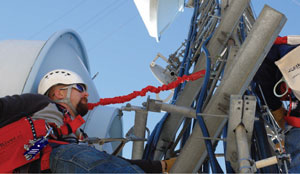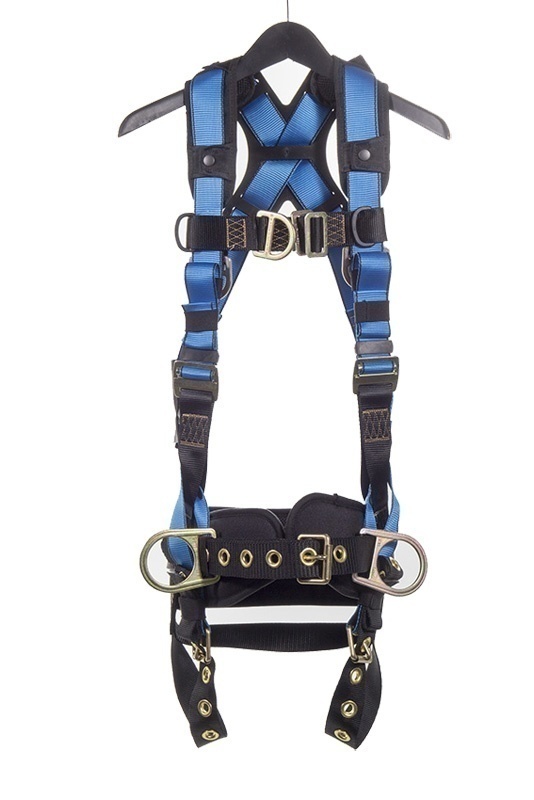YOU HAVE NO ITEMS IN YOUR CART.
Featured Brands
 |
GME Supply distributes a complete line of fall protection equipment by the world's premier manufacturers. To ensure your complete satisfaction, we only distribute the best technology and equipment available. Our lines include DBI Sala, Protecta, Elk River, Petzl, Klein Tools, FallTech, PMI, Ergodyne, Fox Outdoor, PIP Industrial, Liftex, TowerPlex, Miller, Tractel, and many more. Each item we represent is inspected at various stages to ensure the highest quality and reliability. |
Your Guide to Industry Terms & Definitions
|
The ideal method of fall prevention would be to eliminate all fall hazards from the workplace. However, this is seldom possible. Since many fall hazards can not be eliminated, it is important to identify potential hazards before beginning a project. Whenever the possibility for a fall exists, a fall protection system must be used to ensure the safety of the workers. Personal fall protection equipment is divided into two broad categories: Fall Prevention (FP) equipment and Fall Arrest (FA) equipment. Workers must be provided with personal protection equipment appropriate to the application for which it is to be used. The term "personal" is used because the individual wearer is an integral part of the system and must be thoroughly trained in the proper use of the personal protection equipment. Many of our products may also be used in Positioning (PO), Suspension (SU), or Retrieval (RT) applications. Fall Prevention (FP) may be accomplished either by eliminating the fall hazard or by using a tether system. The concept of a tether system is to prevent the worker from reaching a point where a fall can occur. The fall prevention system must be designed with extreme care because all possible hazards must be considered. (An example of multiple fall hazards would be roof work where at least two edges present fall hazards.) Many products may be used as part of a tether system, and these are indicated by the Fall Prevention (FP) symbol. Fall Arrest (FA) is the least desirable method of fall protection, but it can quickly become the only available option. Despite all efforts to eliminate hazards and prevent falls, workplace falls continue to occur. To save lives and minimize injuries, we must be prepared with both the proper equipment and adequate training. A personal Fall Arrest (FA) system is required when working at heights of more than six feet. Products rated for fall arrest are identified by the Fall Arrest (FA) symbol. Positioning (PO) products are designed to hold a worker in a safe working position while allowing free use of both hands. If the work is more than six feet above the surface a personal fall protection system designed for Fall Arrest (FA) may also be required. Products that may be used for positioning applications are indicated by the Positioning (PO) symbol. Suspension (SU) products are designed to suspend the worker to allow him to perform such work tasks as window washing, exterior building maintenance, emergency rescue and bridge work. Products suitable for suspension are highlighted by the Suspension (SU) symbol. (NOTE: Most Suspension (SU) situations will also require a Fall Arrest (FA) system.) Retrieval(RT) products are designed to permit the worker to enter an otherwise unreachable area, such as a confined space or to assist in rescuing an injured or trapped person. Where these hazards exist, OSHA requires that both a rescue plan and a confined space plan be in place before work begins. Products suitable for confined space and/or retrieval are marked by the Retrieval (RT) symbol. Ladder Climbing (LC) harnesses are equipped with a front D-ring that provides an attachment point to be used with either a rail or cable climbing system. Rail or cable climbing systems are found on fixed ladders, communication towers, electrical distribution towers and poles, and other structures. Harnesses that may be used with a climbing system are indicated by the Ladder Climbing (LC) symbol. Personal Fall Protection Equipment: Whether used for Fall Prevention (FP), Fall Arrest (FA), Positioning (PO), Suspension (SU), or Retrieval (RT), all fall protection systems consist of several essential components including an anchorage point, a connecting device, and appropriate body wear such as a full body harness, waist belt, or tree saddle. Harness: The basic component of any personal fall protection system is a full body harness designed to permit the wearer freedom of movement as well as providing sufficient strength to arrest the most severe fall safely. Technology now allows us to design and manufacture a full body harness that is extremely strong, yet so lightweight, comfortable, and easy to adjust that the wearer is barely aware of the unit. GME Supply offers a complete line of full body harnesses, which continue to include the standard models as well as the latest innovations. Anchorage: Anchorage is defined by OSHA as "a secure point of attachment for lifelines, lanyards, or deceleration devices," and OSHA Subpart M, 1926.502(15) states that "anchorages used for attachment of fall arrest equipment shall be independent of any anchorage being used to support or suspend platforms and capable of supporting at least 5,000 pounds (22.2 kN) per employee attached, or shall be designed, installed, and used as follows: (i) as part of a complete personal fall arrest system which maintains a safety factor of at least two; and (ii) under the supervision of a qualified person." Connecting Device: Between the harness and the anchorage, a connecting device is required. There are a variety of quality connecting devices including several variations of shock-absorbing lanyards. Selection of the proper connecting device is determined by the specific job site and job requirements. Designing a Fall Protection System: The following generally accepted elements of fall arrest must be considered in designing a fall protection system:
At GME Supply, we make every effort to provide the very best quality fall protection equipment, but it is designed to be used only by trained workers. It is the employer's responsibility to provide his employees with BOTH the proper fall protection equipment and sufficient training to wear and use the equipment safely. If you have any questions about the proper use of our complete line of Fall Protection Equipment, please feel free to call us. Our lines include DBI Sala, Protecta, Elk River, Petzl, Guardian, Honeywell Miller, FallTech, and many more. |












